How to Store Comforters & Seasonal Bedding: 12 Amazing Tips
-
Pete Ortiz
- Last updated:
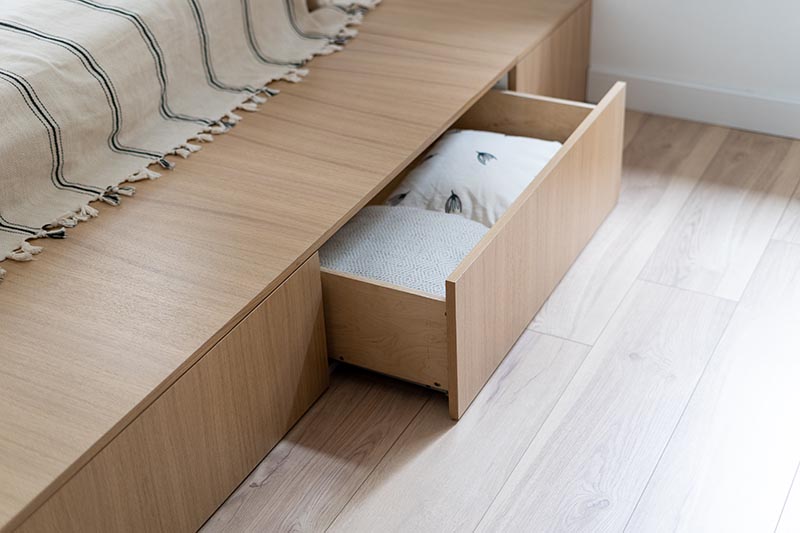
Are you a fan of getting comfy while enjoying a new movie/series before falling asleep? Who isn’t, right? Well, then, you probably have blankets, pillows, and comforters for different seasons (summer and winter). So, the big question is—where do you put all that stuff when you’re switching from the cold days to the hot months or the other way around?
How do you store seasonal bedding so that it stays nice and fresh for a long time? That’s exactly what we’re here to figure out! The following list includes 12 tried-and-true, easy-to-apply tips and tricks on proper comforter/bedding storage. Essentially, all you have to do is find a dry, cool place and use the right containers and bags. But there’s more to it!
Topics discussed in this article:
- How to Store Comforters & Seasonal Bedding
- Should You Keep Bedding in a Basement?
- Quilt and Wool Storage Tips
The 12 Tips on How to Store Comforters & Seasonal Bedding
1. Give the Bedding a Proper Wash
No matter how big, small, cheap, or expensive your linens are, washing them should be the first thing on the menu. It might seem that it doesn’t make a big difference whether you launder them before or after storage, but that’s a common misconception. Even if the comforters, sheets, and blankets look fresh to you, they still have body oils, skin cells, and food particles that serve as a breeding ground for bacteria.1
Dust mites also like to set up shop in humid, dirty bedding.2 So, when the summer/winter season comes back around, and you decide to use these linens again, you’ll be unpleasantly surprised by how broken down and discolored they’ve become over the months. That’s why it’s so important to wash and dry everything before storing it. This way, the bedding will remain soft, strong, and free of bugs and bacteria.
- Set the washer to “delicate mode” and use cold water
- Dry the bedding on low/medium heat in the dryer
- Only fill 50% of the dryer, leaving room for air
- Don’t keep the bedding in there for too long
- Only use air drying if the label says it’s okay

2. Find the Right Spot for Storage
Dry and cool—that’s the best environment for any bedding, including pillowcases, sheets, and everything in between. In contrast, avoid humid and hot spaces as they’ll ruin the linens. We also recommend keeping it all in a dark spot, which shouldn’t be a problem with most closets. This is important: linens will be okay if put in an under-bed drawer for a short while.
However, for long-term storage, you need to make sure the area is airtight. Otherwise, your blankets and quilts might get wet and be taken over by mold (unless they get eaten by pests first). Also, the closet where you plan to put all your seasonal bedding needs to be scrubbed and dusted off.
3. Pick Your Containers and Bags
Don’t have a closet to spare? That’s fine! For most types of bedding, plastic bins/containers are a safe choice. They are airtight, water-resistant, and come at a very affordable price. More than that, they are available in different sizes and shapes. That makes it easier to put tight spots to good use (like a corner, cramped-up shelf, or the area beneath the bed). Or you can invest in vacuum-sealed bags.
These bags are often used for bedding storage because they’re airtight and keep the linens dry for a long time. More importantly, they are 100% safe for all synthetic and most natural fibers. For the best results, put the bedding into storage bags before moving them to a container. But no matter what you do, don’t use cardboard boxes/bins, as they attract rats and pests.
- Comforter hangers
- Plastic containers
- Bedding storage baskets
- Bedding storage ottomans
- Acid-free tissue/boxes
- Vacuum-sealed bags
- Cotton bedding bags
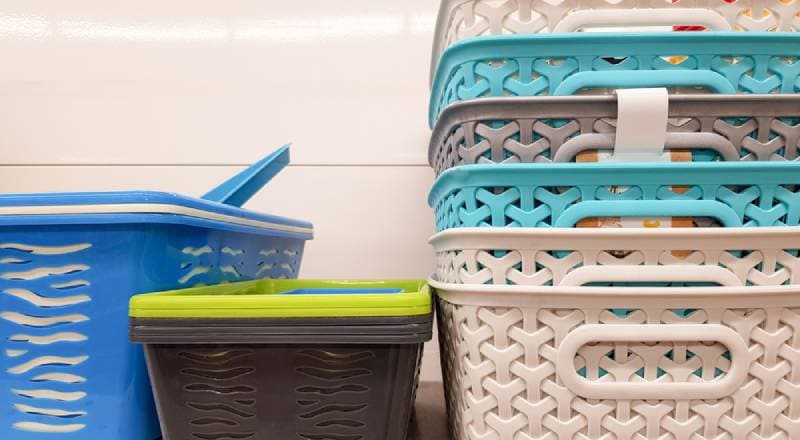
4. Use Cedar for Expensive Stuff
For natural, premium-quality linens, cedar chests are a great choice. While you will have to pay a bit extra, in the long run, it will be worth it. Here’s the fun part: cedar oil does a great job of scaring the bugs and you can “squeeze” it out by sanding the container from the inside. Do this once in 1–2 years and use high-grit sandpaper to avoid damaging the chest.
5. Utilize the Pantry and the Attic
Ideally, you should put all the seasonal bedding and comforters in a linen closet. However, these cost a lot and aren’t usually that big. So, if you have extra space in the pantry, use that instead. No need to invest in anything fancy: put bedding into regular plastic bags and place them on shelves/cupboards in the pantry. The attic is another great backup option.
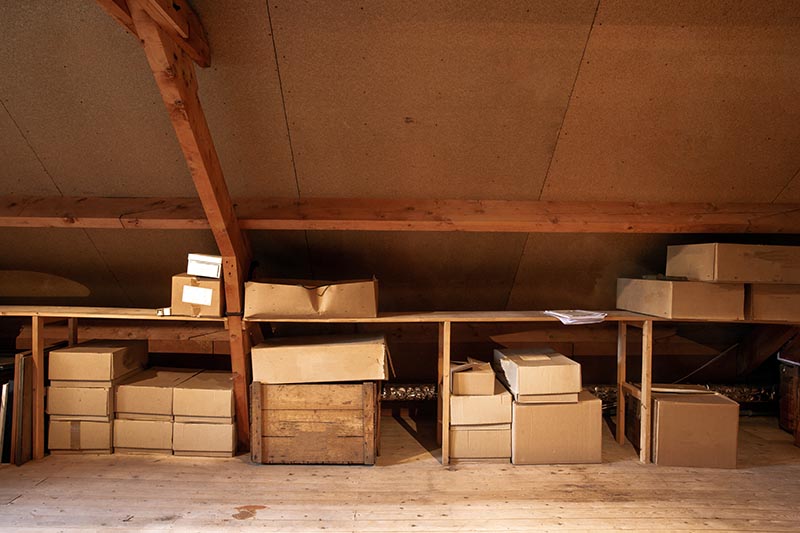
6. Vacuum Seal the Comforters
You’ll have a hard time trying to fit a comforter or two in a regular-size shelf or drawer. But that’s where vacuum-sealing bags come in. You just stuff a comforter into such a bag, zip it up, and suck the air away to make it smaller. With a little bit of luck, you should be able to put that comforter into a standard closet drawer now.
And there’s always the option of rolling it into one big ball and securing it with a ribbon (don’t use duct tape, though). You can store it vertically in a corner somewhere, and it won’t get compressed or crushed by other bedding. As a bonus, it will be much easier to unfold the comforter later when you need it.
7. Be Gentle With Goose Feathers
When storing bedding of any type, always remember to be gentle. This is especially true if you’ve got goose-down comforters. Don’t ever put them into containers, even if they’re very large. Next, make sure they are sitting at the very top of your bedding “pile”. If you put other stuff above these comforters, they’ll turn lumpy in the blink of an eye. Cotton storage bags are the ideal solution here.
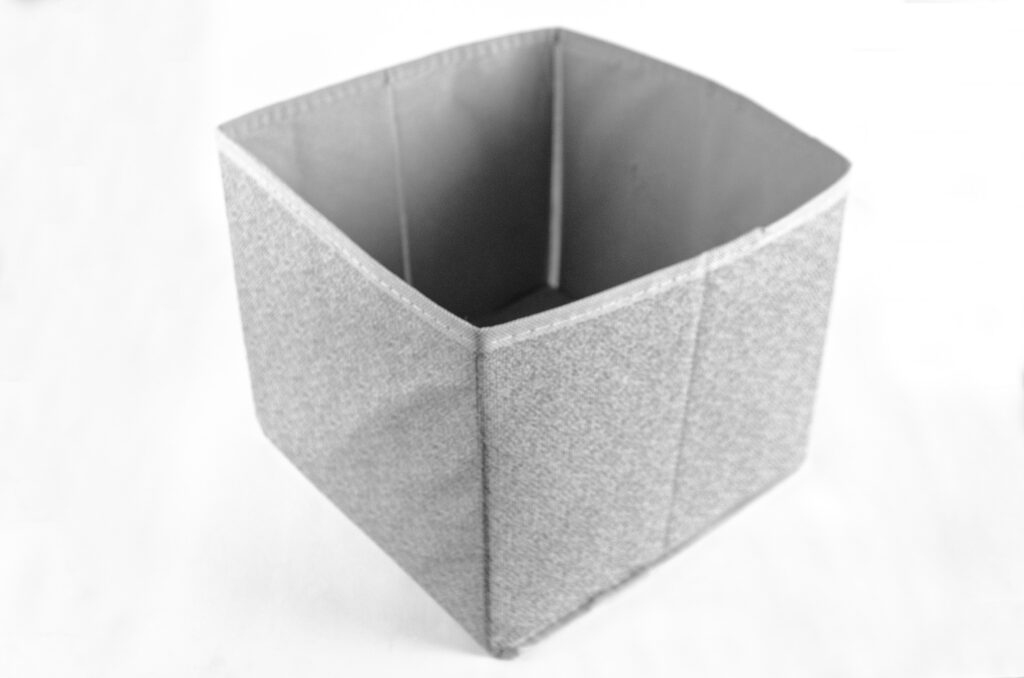
8. Master the Art of Folding
Alright, now that we’ve washed and dried the bedding, found a dry and cool area for storage, and picked the right containers, it’s time to get to folding. Take your time with it: the sheets need to be folded well, and you can stack them on top of each other. That will provide enough airflow for the bedding to “breathe”. Without proper airflow, it will be much harder to keep mold/mildew at bay.
Fitted sheets can be a bit tricky as they tend to take up more space. To fold it properly, first, lay the sheet on the bed/table. Now line up one of the adjacent corners to the other: you can go vertically or horizontally, just not diagonally. Repeat the process with the other two corners and fold the sheets in half. For quick access, put folded sheets into pillowcases with matching patterns.
9. Don’t Use Mothballs
Back in the day, the best way to fight moths off was to put a mothball or two in-between sheets and blankets. Today, they’re a relic of the past. These balls won’t be necessary if you follow our tips and tricks and keep the storage space dark, cool, and dry. Instead, they’ll just add a bad odor to the bedding and maybe even cause an allergic reaction.
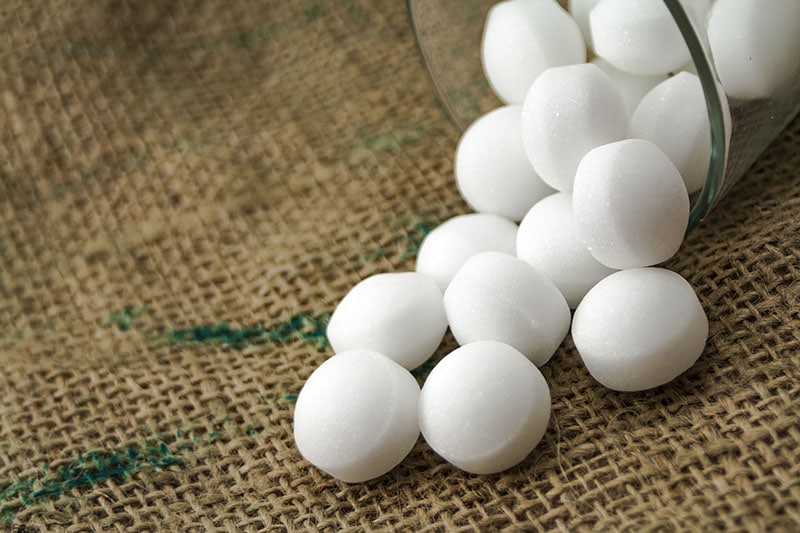
10. Keep the Bugs Away
Still a bit worried that bugs will take over the linens while they’re stored away? You can give yourself peace of mind by using cedar boards. As mentioned, cedar serves as a repellent against bed bugs. The same is true for lavender, mint, rosemary, and thyme. Essential oils work as well, but not all oils are safe for fabrics. And one more thing: over time, bedding absorbs all the odors in the area. Keep that in mind.
11. Store the Blankets Under the Bed
Blankets are easy to store. They aren’t nearly as delicate as comforters or even bed sheets. That’s why they’re often kept in hall closets. The attic is another go-to choice, but you should only use it if the attic is dry and cool. Dressers can also work. Still, under-the-bed storage (like a drawer, for example) is, in most cases, the best spot for your blankets. You just tuck them away and forget about them for like a year.
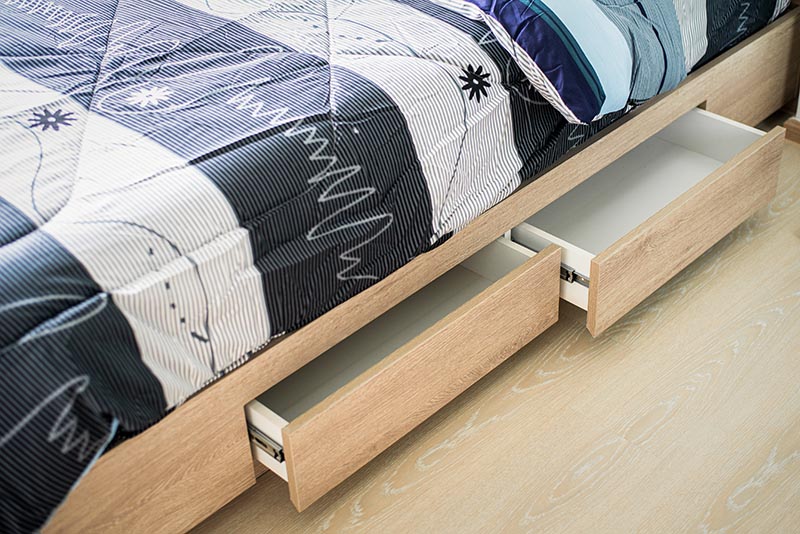
12. Consider Donating Old Bedding
Sometimes, we have too many pillows, blankets, and quilts that we don’t want to throw away yet don’t have any storage room for. If that’s the case with you, you might want to donate the old bedding to someone that actually needs it. But, before doing that, you should keep a couple of worn-out sheets and blankets to be able to protect valuable stuff from dust, oil, and paint.
Should You Keep Bedding in a Basement?
If you can afford to put them somewhere else, then no, the basement isn’t the best place for storing bedding. The same goes for the garage. The reason: these areas are usually humid, which is bad news for pretty much any type of comforter, blanket, pillow, or whatever else you’re trying to keep fresh during the summer/winter season. However, that doesn’t mean you can’t use these spaces.
In most cases, an average-size dehumidifier should be able to fix the situation. As the name suggests, this device is designed to keep humidity levels low and fight off mold, mildew, and bugs. Just make sure the basement isn’t leaking; otherwise, your bedding will be destroyed. Airtight containers are another reliable solution: they don’t let moisture in.
Quilt and Wool Storage Tips
How does someone take care of a quilt that’s been in their family for generations? Obviously, extra care is required, and the best way to do that is to store the quilt in a comforter hanger and allow the threads to breathe. Folding is also an option, but you should stuff it with acid-free tissue paper (crumpled) every time you fold the quilt. Finally, wrap the precious heirloom with a blanket/sheet (cotton-made).
Next up, we have wool, and for this textile fiber, vacuum-sealed bags work well. Or, you can use comforter hangers and cotton bags instead. In contrast, plastic storage bags are NOT welcome here as they trap moisture that can ruin the bedding. So, first, clean the wool; next, make sure it’s 100% dry before putting it in an airtight container.
What About a Duvet?
The first thing to do before storing a duvet is to separate the insert and cover from each other. That’s right: don’t put them together in one spot. Otherwise, you’ll have to deal with bunching, which is no fun at all. So, just like with all the other bedding pieces, wash the cover, fold it, and put it right next to the sheets. As for the cover, store it how you would store a comforter.
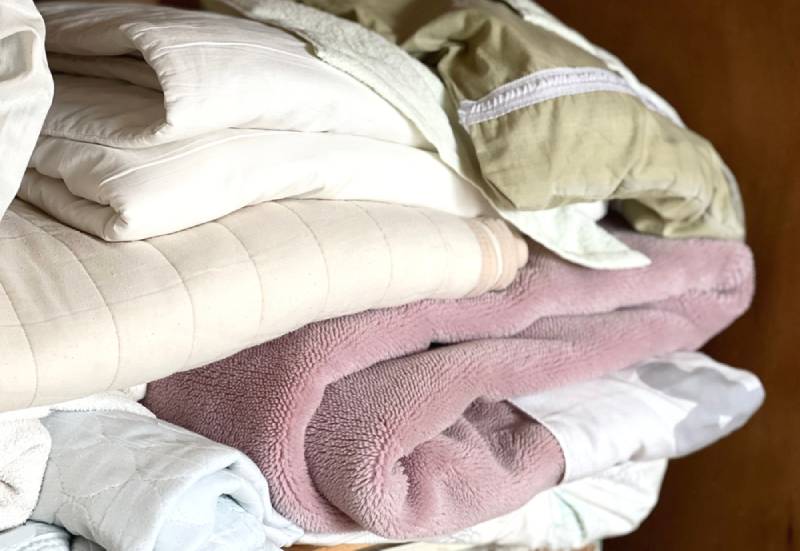
Conclusion
Depending on the brand, material quality, and size of the bedding, it can cost a lot. Besides, if you have a favorite blanket, you probably don’t want to throw it away. In any case, knowing how to store comforters, sheets, quilts, and other bedding will greatly increase their lifespan. Keeping the linens fresh until the season comes back around—that’s the goal here.
A little bit of vacuum sealing, folding, and picking the right containers will help you do exactly that. Bed bugs, mold, humidity, and dust are the biggest nightmare for any type of bedding. But, when stored properly, the linen will stay comfy for many years without taking up all the space in your home.
- MattressClarity.Com – Flat Sheet vs. Fitted Sheet
- Moth-Prevention.Com – Does Cedar Kill Moths?
- LouisianaDepartmentOfHealth.Edu – Mothballs
- Pubmed.NIH.Gov – House Dust Mite Allergen
- WebMD.Com – Dirty Sheets Skin Problems
- CNET.Com – Right Way To Store Down Comforters
- FamilyHandyman.Com – How To Store Bedding
- LifeStorage.Com – How To Store Comforters
- ConsumerReports.Org – Dehumidifier
- Wikipedia.Org – Down Feather
Featured Image Credit: brizmaker, Shutterstock
Contents


